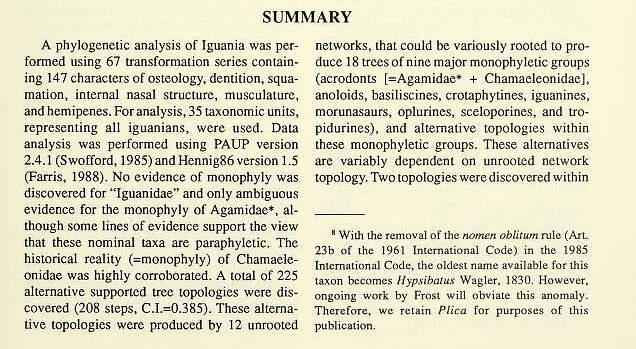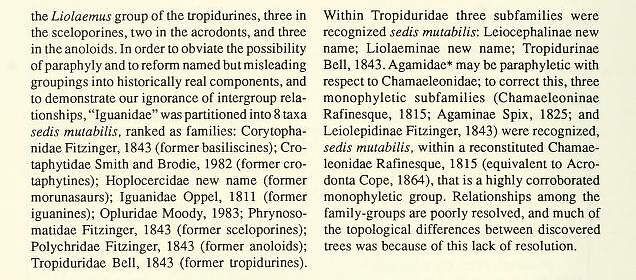ALFONSO, Y. A. (2017)
Oviductal egg development in the curly tailed lizard Leiocephalus carinatus aquarius.
Revista Cubana de Ciencias Biológicas 5 (2): 1-4.
Introduction:
Leiocephalus carinatus (saw-scaled curly-tailed lizard) has thirteen currently recognized subspecies that occur throughout Cuban Archipelago, Cayman Islands, Swan Islands, Bahama Islands and introduced in Florida. It’s a diurnal species that inhabits xerophilic vegetation, mogote complex, coastal and subcoastal microphyllous forest, semidesert thorny crubwoodland, associated with urban habitats (nearby to the coastal zones and rocky ground in the beach) and abandoned walls and concrete blocks.
Reproduction periods for L. carinatus are continuous and increasing in some months. Sexual maturity in males reach between 78.6-81.2 mm SVL and females 70.2-73.0 mm SVL. Eggs dimensions and deposition were previously reported for some subspecies, and only for two subspecies (L. c. armouri, L. c. carinatus) has been reported data related with ovarian follicles and oviductal eggs to determine the ovarian cycle and clutch characteristics. Here we report a synchronized development of oviductal eggs in the curly-tailed lizard Leiocephalus carinatus aquarius.
alfonso-biblio
SMITH, H. T. & ENGEMAN, R. M. (2003)
A Review if the Range, Distribution, and Ecology of the Invasive Northern Curly-tailed Lizard in Florida.
Florida Park Service - 2003 "Parknership" Technical Report: 1-5.
Volltext: https://digitalcommons.unl.edu/cgi/viewcontent.cgi?article=1212&context=icwdm_usdanwrc
Abstract:
We examined the distribution and ecology of the exotic northern curly-tailed lizard (Leiocephalus carinatus armouri) in Florida. Published literature and especially unpublished documents and data were reviewed and synthesized. Our findings suggest that both the range and distribution of the Florida population have expanded at a rapid rate during the last 60 years. Ecological effects o r this species on Florida's native lizards and other fauna have not been quantified and require thorough evaluation.
smith-biblio
SCHULTE, U. (2007)
Beobachtungen zur Hybridisierung zwischen Ctenosaura similis (Gray, 1831) und Ctenosaura bakeri Stejneger 1901 auf Utila, Honduras.
Elaphe N.F. 15: 55-59.
Zusammenfassung:
Die honduranische Karibikinsel Utila ist der einzige bekannte Ort der Welt, an dem drei Großleguanarten vorkommen. Währenddem Iguana iguana rhinolopha primär die Feuchtwälder bewohnt und Ctenosaura bakeri exklusiv die schattigen Mangrovensümpfe besiedelt, bevorzugt Ctenosaura similis semiaride bis aride Lebensdräume mit starker Sonneneinstrahlung. Trotz dieser ökologischen Trennung wurde bereits in der Vergangenheit von fertilen Hybriden zwischen C. similis und C. bakeri berichtet. Neben der Beschreibung eines möglichen Hybridgürtels mit beonbachteten potenziellen Bastarden, wird die ökologische Anpassungs- und Ausbreitungsfähigkeit von C. similis aufgezeigt.
schulte-biblio
SCHWARTZ, A. & GARRIDO, O. H. (1972)
The lizards of the Anolis equestris complex in Cuba.
Stud. Fauna Curaçao and Carib. Is. 39 (134):1-86.
Aus der Einleitung:
NOBLE & HASSLER (1935) named Anolis luteogularis from a long series from western Cuba. This species
was relegated to subspecific status under A. equestris by BARBOUR & SHREVE (1935), who also named A. e. hassleri from the Isla de Pinos (based upon two specimens) and A. e. noblei from eastern Cuba (based upon three specimens) SCHWARTZ (1958) named A. e. thomasi from Camagüey Province and later (1964) reviewed the status of the species in Oriente Province, naming A. e. smallwoodi, A. e. palardis, A. e. baracoae, A. e. galeifer, and A. e. saxuliceps. As presently understood, there are ten subspecies of A. equestris throughout Cuba and the Isla de Pinos. Comments by SCHWARTZ (1964) indicated that there were several Oriente specimens which did not agree with the concepts of the subspecies defined by him and suggested that there was still a great deal to be learned about the distribution and variation in A. equestris at least in Oriente, the physiographically and ecologically most diverse of the Cuban provinces.
... The discovery of two “subspecies” (equestris and luteogularis) occurring syntopically in the same wooded area suggested that perhaps the entire complex needed serious restudy and revision. ... Additional material, in the United States National Museum, indicates that sympatry between equestris and luteogularis occurs elsewhere but has gone unrecognized until now.
... Our final arrangement, which fits the facts as presently demonstrated, is that “Anolis equestris” is a composite of five species: A. luteogularis, A. equestris, A. noblei, A. smallwoodi, and A. baracoae. The rationale for this division will be discussed in detail in the present paper.
KOCH, C., VENEGAS, P., GARCÍA-BRAVO, A., BÖHME, W. (2011)
A new bush anole (Iguanidae, Polychrotinae, Polychrus) from the upper Marañon basin, Peru, with a redescription of Polychrus peruvianus (Noble, 1924) and additional information on Polychrus gutturosus Berthold, 1845.
ZooKeys 141 : 79–107, doi: 10.3897/zookeys.141.1678.
Abstract:
We herein describe a new colorful species of Polychrus with a conspicuous sexual dimorphism from the dry forest of the northern portion of Región de La Libertad, Peru. The new species differs from all other Polychrus species, in that this species has very small dorsal scales and thus a higher number of scales around midbody and in the middorsal line from behind the occipital scales to the level of the posterior edge of the thigh. Furthermore, we redescribe Polychrus peruvianus whose original description is short and lacks information on intraspecific variation and sexual dimorphism. Also, we add some information on intraspecific variation and ecology of Polychrus gutturosus. Finally, we synonymize Polychrus spurrelli Boulenger with Polychrus gutturosus.
KÖHLER, G. (2002)
Schwarzleguane: Lebensweise - Pflege - Zucht
2. stark erweiterte Auflage. 142 Seiten. 204 Farbfotos, Zeichnungen, Landkarten, Klimatabellen. Kartoniert. Herpeton Verlag, Offenbach. ISBN 978-3-936180-01-6.
Verlagstext:
Schwarzleguane (Ctenosaura) gehören zu den attraktivsten Echsen Mexikos und Mittelamerikas. Es handelt sich um stattliche Reptilien, die je nach Art eine Gesamtlänge von 25 bis über 100 cm erreichen und durch ihr archaisches Erscheinungsbild sowie -vor allem bei den kleineren Arten- durch ihre bunte Färbung beeindrucken. Ausführlich und reichlich bebildert werden die Pflege und Zucht der attraktiven Tiere im Terrarium beschrieben. Im Bereich der Systematik der Schwarzleguane waren in den vergangenen Jahren große Fortschritte zu verzeichnen. Alle 17 Arten werden ausführlich und mit brillanten Farbbildern vorgestellt:
C. acanthura , C. alfredschmidti ,C. bakeri , C. clarki , C. conspicuosa , C. defensor , C. flavidorsalis , C. hemilopha , C. macrolopha , C. melanosterna , C. nolascensis , C. oaxacana , C. oedirhina , C. palearis , C. pectinata , C. quinquecarinata , C. similis.
FROST, D. R. & ETHERIDGE, R. (1989)
A phylogenetic analysis and taxonomy of iguanian lizards (Reptilia: Squamata).
University of Kansas. Museum of Natural History. Miscellaneous Publication. Nr. 81.
65 Seiten, 24 s/w-Abbildungen oder Landkarten.
University of Kansas, Lawrence KS 1989, ISBN 0-89338-033-4.


JES, H. (2008)
Leguane - faszinierend und exotisch.
4. Auflage (1. Auflage 2003); 64 Seiten, zahlreiche Farbfotos von Christine Steimer
Verlag Graefe & Unzer GmbH, München. ISBN 978-3-7742-5758-9.
Verlagstext:
Filme wie Jurassic Park haben Echsen ins Bewusstsein vieler Menschen gebracht. Leguane faszinieren uns, denn sie erinnern an die Saurier aus längst vergangenen Zeiten. Verbunden mit dem Wunsch immer Ausgefalleneres besitzen zu wollen, sind Terrarientiere – und damit auch Leguane – heute “en vogue”. Mit der richtigen Pflege und Haltung zeigen sie vielfältige und interessante Verhaltensweisen und werden damit für Ihre Halter zum spannenden Beobachtungsobjekt. Dieser GU Tierratgeber vermittelt alles Wichtige rund um die Themen Einrichtung und Technik, Ernährung und Pflege – damit Sie Ihrem Leguan ein artgerechtes Leben bieten können.